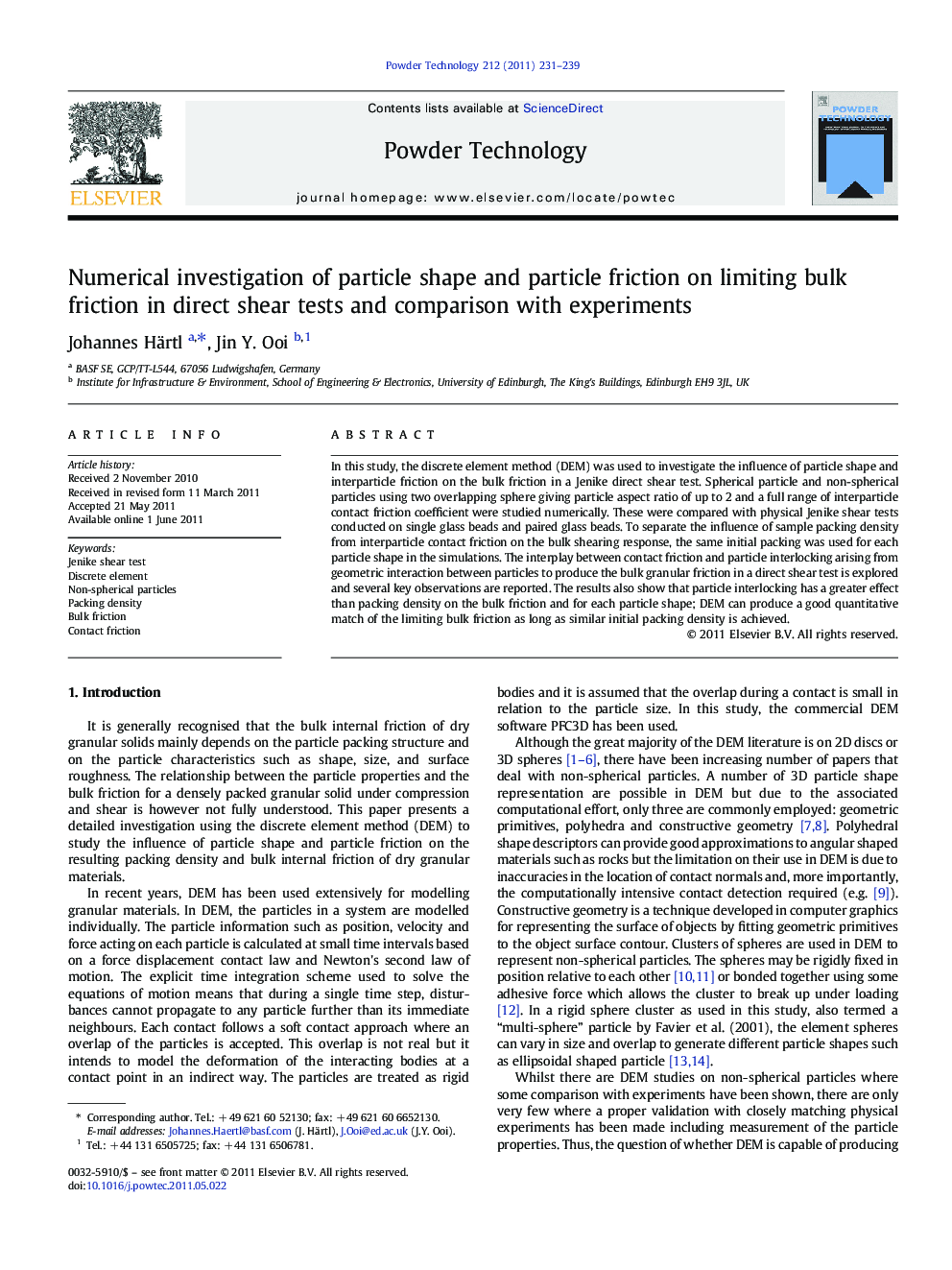| کد مقاله | کد نشریه | سال انتشار | مقاله انگلیسی | نسخه تمام متن |
|---|---|---|---|---|
| 237440 | 465707 | 2011 | 9 صفحه PDF | دانلود رایگان |

In this study, the discrete element method (DEM) was used to investigate the influence of particle shape and interparticle friction on the bulk friction in a Jenike direct shear test. Spherical particle and non-spherical particles using two overlapping sphere giving particle aspect ratio of up to 2 and a full range of interparticle contact friction coefficient were studied numerically. These were compared with physical Jenike shear tests conducted on single glass beads and paired glass beads. To separate the influence of sample packing density from interparticle contact friction on the bulk shearing response, the same initial packing was used for each particle shape in the simulations. The interplay between contact friction and particle interlocking arising from geometric interaction between particles to produce the bulk granular friction in a direct shear test is explored and several key observations are reported. The results also show that particle interlocking has a greater effect than packing density on the bulk friction and for each particle shape; DEM can produce a good quantitative match of the limiting bulk friction as long as similar initial packing density is achieved.
The limiting bulk friction was found to increase in a non-linear manner towards an asymptotic value as particle contact friction increases, with a larger increase for particles with larger aspect ratios. For single sphere, the maximum achievable bulk friction coefficient was only of the order of 0.8 irrespective of how high the particle contact friction was.Figure optionsDownload as PowerPoint slideResearch highlights
► The limiting bulk friction was found to increase in a non-linear manner towards an asymptotic value as particle contact friction increases, with a larger increase for particles with larger aspect ratios.
► For smooth particles with very small particle contact friction coefficient (~ 0.05), the simulations predicted much larger bulk friction coefficient of the order of 0.3–0.4 in the shear cell for the particle shapes investigated.
► For single sphere, the maximum achievable bulk friction coefficient was only of the order of 0.8 irrespective of how high the particle contact friction was.
► The mobilisation of the bulk friction was found to depend not only on the particle shape but also on the mobilised particle contact friction at each contact and the coordination number.
► The comparison with the closely matching physical experiments has shown that DEM is capable of predicting quantitatively the limiting bulk friction coefficient as long as similar initial packing density was achieved.
Journal: Powder Technology - Volume 212, Issue 1, 15 September 2011, Pages 231–239